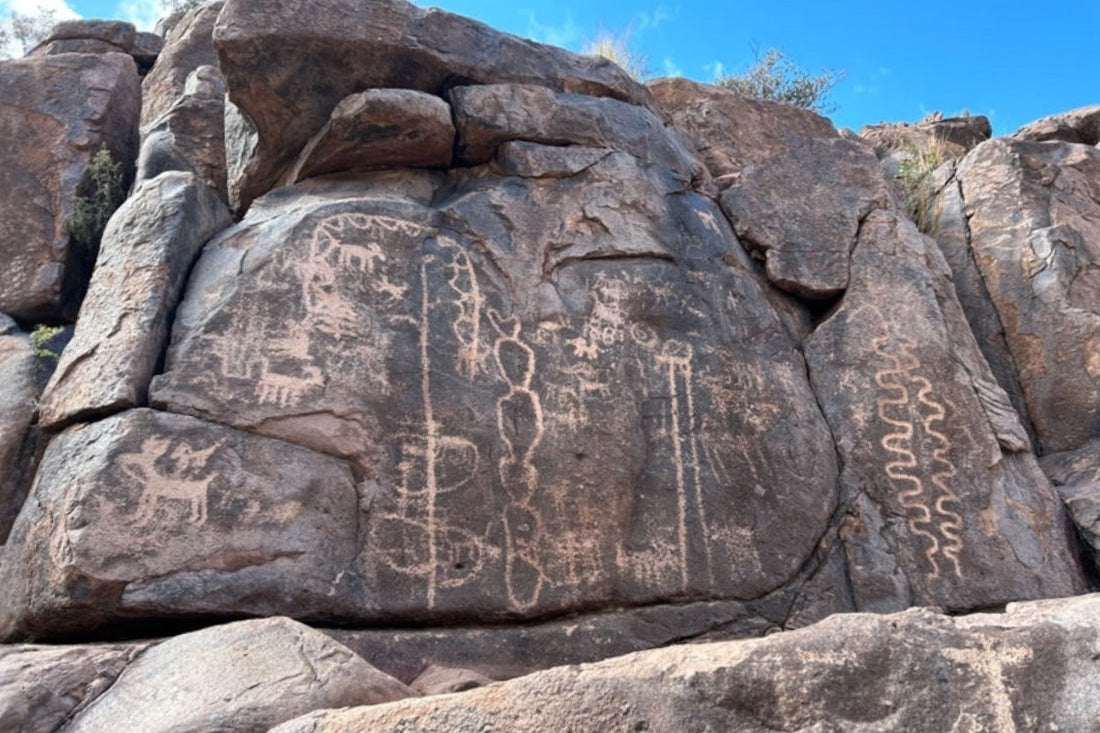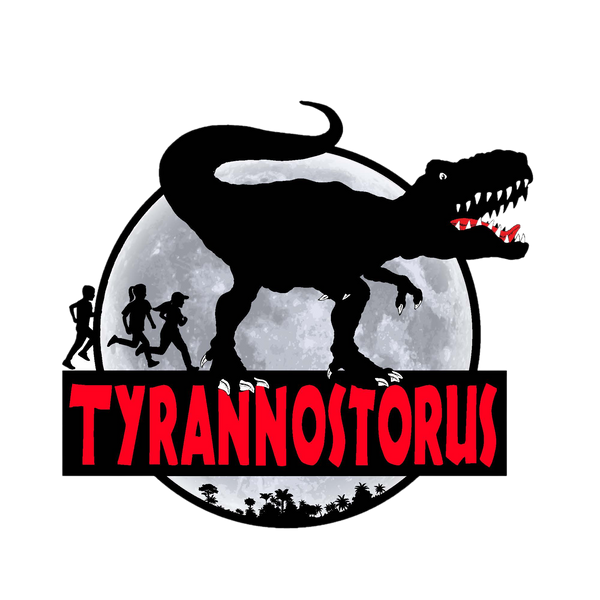
Ancient Arizona Art
Ever since I was a kid, I’ve been fascinated by archaeology — the thrill of uncovering stories buried in time, especially those of ancient civilizations right here in Arizona. On a recent hike along the Hieroglyphic Trail near Gold Canyon, I set out in search of ancient artwork left behind by a remarkable people known as the Hohokam.
Hieroglyphics? Not Quite.
Despite the trail’s name, what you’ll find here aren’t Egyptian-style hieroglyphics — they’re petroglyphs, which are designs etched, pecked, or abraded into rock surfaces. These timeless carvings are found all throughout the Southwest and offer clues into the lives of the people who made them.
A Desert Full of Life
As I began my hike, I was immediately struck by the desert’s biodiversity. Towering saguaros stood like sentinels over the landscape, joined by clusters of teddy bear cholla and other succulents. This lush desert ecosystem wasn’t just beautiful — it was central to the survival of the Hohokam, who lived here between 300 and 1450 AD.
Farmers, Hunters, and Engineers
The Hohokam were incredibly resourceful. When they weren’t harvesting saguaro fruit, prickly pear, or cholla buds, they were engineering vast irrigation canals, some over 10 miles long, to route the Gila and Salt Rivers to their fields. These canals rivaled the infrastructure of ancient Rome and supported crops like corn, beans, squash, cotton, and wild beans.
The desert was also a rich hunting ground, where the Hohokam tracked deer, bighorn sheep, reptiles, and fish, sharing the environment with creatures like collared lizards (which, by the way, are way too fast to catch).
Unexpected Discoveries
While admiring the natural beauty, I came across a strange “rock” — which turned out to be plastic, hiding a pink logbook beneath it. Naturally, I signed my name and added a shoutout to Tyrannostorus — maybe someone else will find it and get inspired to explore science and natural history too.
Of course, not all surprises were pleasant — like a discarded water bottle along the trail. If you’re hiking, remember: leave no trace. Let’s keep these places as beautiful as we found them.
Rockhounding and Rock Art
The geologist in me couldn’t resist admiring some chalcedony crystals sparkling in the sun. But the real treasure came when the petroglyphs began to appear.
The first was an abstract spiral, a common motif in Southwestern rock art. These were etched into dark, varnished surfaces — a coating known as desert patina. Artists used stone tools to chip away the patina and reveal the lighter rock underneath. The most common technique was pecking, where one stone was struck with another to leave a mark.
More Than Just Art
Petroglyphs are more than just beautiful — they’re fragile, protected, and important. It’s tempting to get close, but even touching can cause damage. These images have lasted centuries — let’s make sure they last centuries more. The Antiquities Act protects them, and damaging them can lead to serious consequences.
One of the most stunning carvings I found depicted a centipede, possibly a warning or simply artistic expression. Another clearly represented a large cat — perhaps a mountain lion or jaguar. These representational petroglyphs — showing animals like bighorn sheep, deer, reptiles, and predators — are my favorites. They give us a glimpse into how the Hohokam viewed their world.
Life Near Water
Petroglyphs are often found near seasonal water sources, and this trail was no exception. In a pre-plumbing world, water meant life — and community.
So Why Did They Do It?
We may never know the exact purpose behind these carvings. Theories include:
-
Hunting or fertility symbols
-
Ritual or religious markers
-
Clan symbols or boundary markers
-
Astronomical or calendar references
-
Or simply… art for art’s sake
The Legacy of the Hohokam
The word “Hohokam” comes from the O’odham language and means “those who are gone.” Between 1350 and 1450 A.D., most Hohokam settlements were mysteriously abandoned — possibly due to drought and environmental stress.
But their legacy didn’t vanish. The Pima and Tohono O’odham tribes are believed to be their direct descendants, carrying forward traditions that link back to these ancient desert dwellers.
Come Explore With Us
This hike gave me a new appreciation for the incredible artistry and ingenuity of the Hohokam people. If you're curious to learn more about ancient civilizations, archaeology, or natural history, come visit us at Tyrannostorus — where science comes alive!
